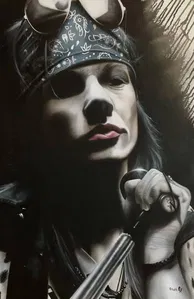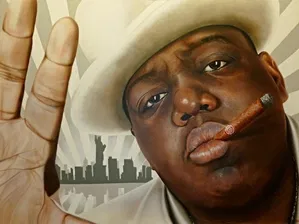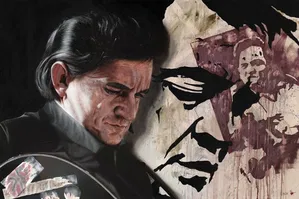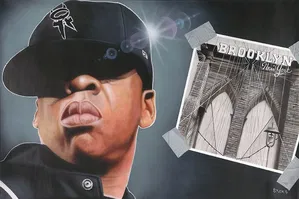Stickman How Sweet The Sound - Elvis Giclee On Canvas
Status: In Stock Available | Condition: New | Edition:Limited Edition Giclee On Canvas | Edition Size: Limited Edition Of 250 | Dim:24 X 36 | Stickman| Item #: MGSWSOUNDSN
Price: $ 995.00 USD.. 🚚 This item ships FREE
12/18/2025 $331.67 1st payment
1/17/2026 $331.67 2nd payment
2/16/2026 $331.67 3rd & final payment
payments are automatically deducted from your credit card.
Optional Payment Methods
As an option you may also pay for Stickman How Sweet The Sound - Elvis Giclee On Canvas using Paypal or with your Amazon Account(*select items). Please note that all orders must be delivered to a physical address verified by Paypal or Amazon.
Shipping Within The Continental USA
How Sweet The Sound - Elvis Qualifies for Free Shipping
For your peace of mind, every order is shipped fully insured with UPS and requires a signature upon delivery. This ensures that your artwork arrives safely and securely, directly into your hands. Depending on the item, shipments may come from our gallery or from one of our trusted warehouses within the USA.
Before your order is processed and shipped, one of our agents will reach out to you by phone to confirm the details. This extra step ensures everything is accurate, so your artwork arrives smoothly and without any issues. … View our shipping policies
International Shipping
Countries We Ship To:
Request your international delivery cost for items not eligible for PayPal flat rate or free international shipping. Click the link and provide your details to request your quote. We’ll provide your personalized shipping and insurance quote within 24 hours.
Spanish (Español) Solicite el costo de entrega internacional para artículos que no sean elegibles para la tarifa plana de PayPal ni el envío internacional gratuito. Haga clic en el enlace y proporcione sus datos para solicitar su cotización. Le enviaremos su cotización personalizada de envío y seguro en un plazo de 24 horas.
French (Français) Demandez le coût de livraison internationale pour les articles non éligibles au tarif forfaitaire PayPal ou à la livraison internationale gratuite. Cliquez sur le lien et indiquez vos informations pour demander votre devis. Nous vous fournirons un devis personnalisé pour l’expédition et l’assurance sous 24 heures.
German (Deutsch) Fordern Sie die internationalen Lieferkosten für Artikel an, die nicht für den PayPal-Pauschaltarif oder den kostenlosen internationalen Versand berechtigt sind. Klicken Sie auf den Link und geben Sie Ihre Daten ein, um Ihr Angebot anzufordern. Innerhalb von 24 Stunden erhalten Sie Ihr persönliches Angebot für Versand und Versicherung.
Italian (Italiano) Richieda il costo di consegna internazionale per gli articoli non idonei alla tariffa flat di PayPal o alla spedizione internazionale gratuita. Clicchi sul link e inserisca i suoi dati per richiedere il preventivo. Le forniremo un preventivo personalizzato per spedizione e assicurazione entro 24 ore.
Dutch (Nederlands) Vraag de internationale verzendkosten aan voor artikelen die niet in aanmerking komen voor het PayPal-vast tarief of gratis internationale verzending. Klik op de link en geef uw gegevens door om uw offerte aan te vragen. U ontvangt binnen 24 uur een persoonlijke offerte voor verzending en verzekering.
Japanese (日本語) PayPal の定額送料や国際無料配送の対象外となる商品の国際配送料をお見積もりします。リンクをクリックし、必要事項をご入力のうえお見積りをご依頼ください。24時間以内に発送および保険の個別見積りをご案内します。
🇦🇺 🇦🇹 🇩🇰 🇫🇮 🇫🇷 🇩🇪 🇮🇪 🇮🇹 🇯🇵 🇳🇱 🇳🇴 🇪🇸 🇸🇪 🇨🇭 🇬🇧
Promotions For Stickman - How Sweet The Sound - Elvis
Price Match
Art Terminologies
Giclée - A computerized reproduction technique in which the image and topography are generated from a digital file and printed by a special ink jet printer, using ink, acrylic or oil paints. Giclée printing offers one of the highest degree of accuracy and richness of color available in any reproduction techniques
Lithography - Printing technique using a planographic process in which prints are pulled on a special press from a flat stone or metal surface that has been chemically sensitized so that ink sticks only to the design areas and is repelled by the non-image areas. Lithography was invented in 1798 in Germany by Alois Senefelder.
Serigraphy (Silk-screen) - A printing technique that makes use of a squeegee to force ink directly onto a piece of paper or canvas through a stencil creating an image on a screen of silk or other fine fabric with an impermeable substance. Serigraphy differs from most other printing in that its color areas are paint films rather than printing ink stains.
Remarque – Additional enhancements by the artist on some or all of the final prints within an edition
Artist's Proof (AP) - Print intended for the artist's personal use. It is common practice to reserve approximately ten percent of an edition as artist's proofs, although this figure can be higher. The artist's proof is sometimes referred to by its French épreuve d'artist (abbreviation E.A.). Artist's proofs can be distinguished by the abbreviation AP or E.A., commonly on the lower left of the work.
“Gallery wrapped” is a way of finishing a canvas artwork so it’s ready to hang without needing an additional frame. The canvas is stretched tightly over thick wooden stretcher bars, and the edges of the canvas are wrapped around the sides and stapled on the back.
Stretched - When a canvas is described as stretched, it means the artwork has been pulled tightly over a wooden frame (called stretcher bars) and secured on the back. This process keeps the canvas flat and smooth, ready to hang on the wall or to be placed inside an outer frame.
Hand Embellished - When an artwork is hand embellished, the artist (or a skilled studio artisan) personally adds paint, texture, or other details by hand on top of the printed or finished piece. This gives each artwork unique highlights and depth, making no two pieces exactly alike — even within the same edition.
… learn more Click here for more Art Terms
Availability
Status: In Stock Available
Gift Cards

Gift Card Purchase
E-Gift Cards from The Collection Shop are the perfect way to gift art enthusiasts. Click below for more details!
Stickman bio
Trevor “Stickman” Stickel specializes in icon based, pop-realism portraits that capture legendary moments, powerful ideas, and raw emotion. His work is described as gritty-yet fresh, complex-yet simple. Graduating from a Jekyll and Hyde influence early in his career, in which he divided his time between family portraits and airbrush design work on helmets and Harleys, Stickman had the epiphany to combine both styles while reading “According to the Rolling Stones”. Two weeks later he finished his first canvas portrait of Mick Jagger, aptly titled “Please allow me to introduce myself”, which forever changed the direction of his career in the art world. THE MISSION The idea or "mission" behind Stickman’s artwork is to create an artistic tribute to the music and to the musicians that have had a tremendous impact on him and many others. Historically, these tributes would have been limited to photos/posters that adorned the bedroom walls of teenagers and dorm rooms throughout adolescence. Stickman aims to create a style of art that brings these iconic figures back into our lives, and in a manner that adults can display proudly in their homes. THE CONCEPT The concept is to take a realistic portrait and juxtapose it with a background that expresses the feelings and emotions of the subject. This method also allows Stickman to explore other disciplines of art – many of his backgrounds will include abstract, expressionism, impressionism, realism, pop art, street art, surrealism and quite often a combination of these. This is where he gets to enjoy the artistic side of these pieces, while paying additional homage to some of his favorite visual artists. THE HIDDEN MESSAGES AND SYMBOLS In addition to the art itself, Stickman also adds (and quite often hides) his trademarked Stickman symbol (stick figure with devil horns) and the statement "Devil Inside" to the painting. €¢ The Stickman symbol is derived from Stickman’s last name (Stickel) and a common phrase he hears from viewers, "I can't even draw a stick man". The horns represent rock and roll (his primary focus), which is generally regarded as the devil’s music, and references the duality of man (good vs. evil). €¢ The statement "Devil Inside" also references this Jekyll and Hyde type of duality. Stickman often feels there is a difference between Stickman the artist and Trevor Stickel the person. When focused on a subject and working on a piece, he often gets so involved in the subject he finds himself emulating them in the way he dresses and acts, similar to a method actor. €¢ The signature on the bottom right corner usually shows the Stickman symbol imitating the subject. THE TITLE The title of each piece is often overlooked but may very well be the most important piece of the puzzle. Stickman looks for a lyric that he believes personifies the subject or his feeling toward that subject and from there, begins to create an image and feeling that takes the viewer to that emotional state of mind. The titles are always a lyric from the subject's song but never the title of a song. If the viewer is a fan of the subject, they should almost hear the lyric or feel the emotion of the lyric when looking at the piece. Knowing the title completes the emotional connection to the painting and usually reveals a personal trait about the subject.







